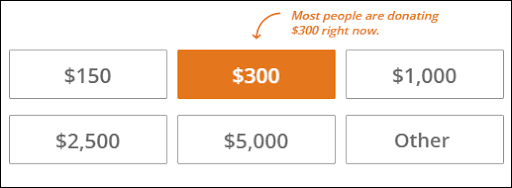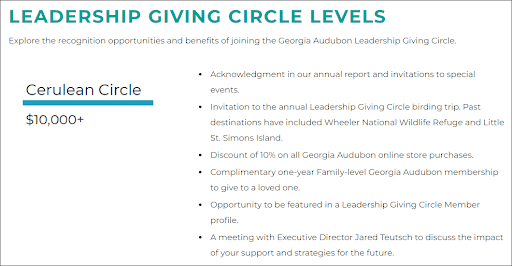Remember these ideas in 2024! A guest post by Brad Dowhaniuk of 99 Pledges
As a nonprofit fundraiser, you’re aware of how important the year-end is to your organization’s fundraising goals. The M+R Benchmarks report shows that donations received in December comprise 26% of the average nonprofit’s annual revenue. In 2022, nonprofits received 5% of their annual revenue on the last day of the year.
The last few months of the year hold so much potential for nonprofits—but how can you maximize your fundraising success, and, in turn, your annual budget? In this guide, we’ll explore some of the top fundraising ideas and strategies to leverage during the end of the year:
- Add a twist to traditional fundraisers.
- Sell seasonal items.
- Participate in Giving Tuesday.
- Hold a holiday-themed gathering.
1. Add a twist to traditional fundraisers.
As NXUnite by Nexus Marketing’s guide to the year-end giving season explains, the term refers to “the spike in charitable giving that happens during the last few months of the year.” This surge in giving likely happens because people feel more inclined to donate during the holidays that occur in November and December.
Because this season can be busy, you may want to stick to fundraisers you’ve already tried before. Here’s how you can add a holiday-themed twist to these more basic campaigns to make them feel special and season-appropriate:
- 5Ks and fun runs: This classic idea is easy to organize, tends to be highly successful, and is extremely adaptable. Add in a theme that makes the fundraiser feel more festive, like naming it a “Turkey Trot” and asking participants to dress up in Thanksgiving-related costumes.
- Auction: Try procuring auction items that match the season. For example, you may feature a bath set with scents like peppermint and fir trees, a basket of baked goods like gingerbread cookies, and tickets to a showing of The Nutcracker.
- Contests: Like fun runs, contests can be adjusted to fit many contexts. For fundraisers that take place in the fall, you may host a pumpkin carving contest or chili cook-off. For those that happen later in the year, consider organizing an ugly sweater contest or gingerbread house decorating competition.
Remember to consider your audience when adapting more traditional fundraising ideas. If you are fundraising for your school, for example, you might opt for an education-centered idea like a festive read-a-thon. Remember to plan ahead as 99Pledges’ guide to holding read-a-thons recommends gathering tools and supplies like fundraising software, written instructions for participants, reading logs, and prizes for the best results.
2. Sell seasonal items.
While your organization likely has a large, cohesive fundraising campaign that you carefully planned for the end of the year, you can complement these efforts with additional low-lift, online fundraising ideas.
Specifically, consider selling season-specific, branded merchandise. Supporters will appreciate the opportunity to donate to your cause and receive a new item at the same time.
This strategy will be easier if your organization already sells merchandise and has factors like designs, suppliers, and an online store in place. To add a special touch, you might create your standard merchandise in holiday colors like orange, dark green, or red and add symbols or images that represent the holidays, such as turkeys or snowmen.
Make sure to promote these items as “exclusive” or “limited-time offers” so your supporters feel a sense of urgency to purchase them. And, if you have leftover inventory, you can sell them for a discounted price when the season ends.
3. Participate in Giving Tuesday.
Giving Tuesday is a global day of giving that takes place annually on the Tuesday following Thanksgiving. This day is meant to redirect the consumerist nature of Black Friday and Cyber Monday to charitable causes instead.
As a 501(c)(3) charity, your nonprofit is automatically eligible to participate in Giving Tuesday. Here are a few tips that can make the day run more smoothly:
- Set goals. Understand how much you’ll need to raise on this day to keep your nonprofit on track to meet its annual goals. You may consider setting tiered goals (e.g., a minimum you must reach to sustain operations, a target just above your minimum, and a more ambitious goal above that one).
- Promote ahead of time. Those outside of the mission-driven sector may not be aware of Giving Tuesday, so be sure to share about it. Communicate through social media and other online platforms to engage younger members of your audience.
- Test and optimize technology. Make sure all of your technology, including your fundraising software and website, is fully functional and can handle increased traffic. If needed, revise your donation form to be more streamlined.
While your organization will likely continue to raise most of its year-end revenue during the final month of the year, placing a focus on Giving Tuesday will give you a cushion that could push you beyond your goal for the year.
4. Hold a holiday-themed gathering.
Across many cultures and religions, the holiday season is about spending time with family and friends and creating warm memories. Holding a gathering for your supporters allows you to cultivate these relationships while you fundraise.
Here are some simple ways to gather your supporters together and build those connections:
- Share a meal together, like a Thanksgiving potluck
- Hold an afterschool winter ball with dancing and refreshments
- Ice skate and sip hot chocolate
- Host a bonfire with s’mores and hot dogs
To fundraise at these gatherings, simply sell tickets beforehand. Encourage supporters to purchase tickets online so the gathering itself can remain focused on relationships.
Whether you organize an engaging seasonal fundraising event that inspires donations or put all of your energy into a well-crafted online initiative, preparing ahead of time with thorough planning is crucial. Remember that what your nonprofit does during this season can completely change its trajectory for the coming year.
Author: Brad Dowhaniuk
Brad Dowhaniuk is the co-founder of 99Pledges, which provides schools and teams with an easy-to-use, web-based fundraising solution to manage and drive success in Fun Runs, jog-a-thons, baseball hit-a-thons, and much more.




